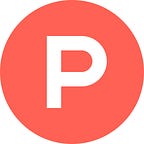How this Maker built his first decentralized app ⛓
A few months ago, Maker Bruno Costa participated in the #24hrstartup Challenge and built Blockvault. The idea? A more secure, data-portable alternative to 1Password.
When Blockvault launched on Product Hunt, Bruno explained that the difference between his product and other password managers was simple:
“The short answer is: it’s enhanced by the power of Blockstack.”
Our friends at Blockstack talked to Bruno about his journey over the past few months:
Why did you decide to build Blockvault?
I never had built a DApp and I had zero experience using client-side frameworks up until I learned about Blockstack. The simplicity of developing a decentralized app using Blockstack sparked my curiosity. After some brainstorming, a password manager seemed the perfect problem to solve due to Blockstack’s user data ownership nature. So I took Blockvault as a challenge to learn more about this ground-breaking technology.
For someone that knows nothing about Blockvault, could you describe why it’s better than more well-known alternatives?
Currently, all password management solutions have a tradeoff between data access and data ownership. Some prioritize ownership by storing everything on the users preferred storage. This is useful to secure personal data that should only be accessed by a single person, but not by teams. Others prioritize access by storing everything in a central server controlled by them, thus allowing teams to share sensitive information between its collaborators.
Blockvault goes around this and provides both data access and data ownership, taking advantage of Blockstack’s multi-player storage in a way that users not only own and control access to their personal information, but they can also share vaults with other teammates without the need for a third party.
What was the build process like for the initial version of Blockvault? How did you learn to build a decentralized application?
The submission deadline for the App Mining program was approaching, plus Pat Walls had just announced the first #24hrstartup. Perfect timing! I set out to build Blockvault publicly and live stream the entire process during the #24hrstartup.
On the morning of the hackathon, I opened the Zero-to-Dapp tutorial to learn the basics and have a quick prototype working. The docs provided by the Blockstack are a massive help to get anyone started. Over the next few hours, I kept improving the app and in just under 24h the first version of Blockvault was created and deployed for beta testing.
How are you thinking about the next versions and future work?
After the hackathon, I struggled with the half-baked codebase and decided to start again from scratch with solid fundamentals and with focus on the user experience.
Nonetheless, putting out that first, raw version of Blockvault was crucial for me to learn the basics of building a decentralized app and to get me excited about the next iterations.
I brought in Rui to the team, who is a super talented UX Designer, and now we are focused on launching a completely new version of the web app with a new design. The major new feature on this release will be the team sharing capabilities.
Future plans include releasing a browser extension. And after that, we are planning to launch native clients for desktop and mobile.
What do you think needs to happen before more ‘regular people’ use decentralized applications?
We are finally starting to see some raising concerns about how the big corporations track, collect and use our data. Nonetheless, the general public still doesn’t see true privacy and security as a mandatory feature, so they keep trusting AppAmaGooBookSoft with their lives.
A global awakening to this privacy issue needs to happen — we as decentralization advocates have a long way to go on educating people on this matter.
Besides that, the current set of decentralized alternatives is limited and the ones that exist are subpar in terms of feature set and usability. DApps to succeed need to focus on the user experience as much as on the development.
What are the main differences in your mind when building a decentralized application vs. others you’ve worked on? Are there any differences at all?
One of the key differences is the reduced level of complexity when building a decentralized application. There’s no need to worry about infrastructure, server configuration or database maintenance. Overall, there are fewer dependencies. We can focus on a single problem and optimize to solve that problem really, really well. In the long run, this leads to less operating costs.
With Blockstack you can have a trivial decentralized app up and running with a short amount of time and effort.
What do you hope Blockvault becomes in the short-term and long-term future?
In the near future we need to focus on building a flawless core product and a trustworthy brand. Slowly growing our user base from the first early-adopters, the ones already looking for decentralized alternatives, to a broader audience, the ones that still need to be convinced.
In the long-term, Blockvault has the potential to become a flagship product within existing DApps — a great example of utility, usability and privacy. Ideally, it becomes a gateway to the DApps ecosystem for regular people.
Want to get paid for your dApp? Register here for App Mining to be eligible for next month’s payouts. 👏
This post was crafted by Product Hunt and sponsored by our friends at Blockstack. 🙂
